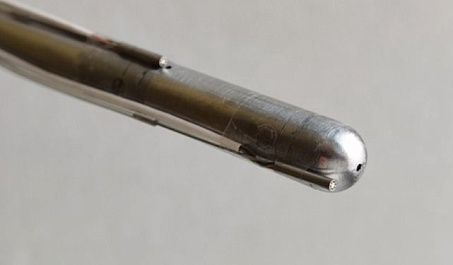Modern manufacturers of civil aviation equipment are making increasingly high demands on the accuracy of the characteristics obtained during aerodynamic studies of aircraft models. In this regard, the study of both stationary and non-stationary parameters affecting them in the flow of the wind tunnel becomes relevant.
The non-stationary parameters of the air flow include, in particular, pulsations of full and static pressure in the working part of the pipe. Knowledge of these indicators is necessary to improve the methodology of experimental research. Scientists of the Central Aerohydrodynamic Institute named after Professor N.E. Zhukovsky (part of the Scientific Research Center "Institute named after N.E. Zhukovsky") have developed a method for measuring these characteristics directly in an experimental setup.
At the first stage, TsAGI specialists designed and manufactured special equipment — Pitot-Prandtl type nozzles (an elongated metal tube with holes receiving the flow). The design features of the nozzle allow you to protect the pressure sensors installed in it from damage by small particles that may be contained in the flow of the wind tunnel.
"At the same time, we face a difficult question: how to measure non-stationary pressure with high accuracy? We have developed a mathematical model that allows us to determine its values in front of the intake opening according to the readings of sensors installed in the nozzle," said Elena Anokhina, an engineer of the first category of the Department of aerodynamics of aircraft of the TsAGI FAA.
Scientists of the Institute have developed a methodology for calibrating such receivers. The nozzle with internal and reference sensors installed next to the receiving holes (measuring pressure without distortion) was evaluated in two ways. In the first case, frequencies from 20 to 11,000 Hz were simulated using a sound generator and an acoustic system. In the second case, a pulse effect was produced by breaking a rubber ball. In both variants, it is proved that when using the developed mathematical model, the sensor readings in the nozzle can be restored by calculation to the values of reference devices.
Further, the nozzle with full and static pressure sensors was placed in the working part of the T-128 wind tunnel. Due to this, the pulsations of the total pressure in this installation were measured for the first time. In addition, the delay of full-time and static pressure receivers has been studied. All this will allow TsAGI scientists to obtain more accurate characteristics of the aircraft model under study.
MOSCOW, TSAGI Press Service

